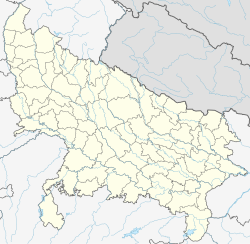Parsanda
The topic of Parsanda is one that has generated great interest over the years, both among experts and the general public. The relevance of Parsanda in the current context cannot be overlooked, as it impacts various aspects of daily life, from health to politics. This article aims to offer a complete and updated vision of Parsanda, addressing its implications, its evolution over time and the future perspectives that are envisioned around this topic. Through a detailed and rigorous analysis, we seek to provide the reader with a clear and enriching panorama that allows them to fully understand the importance of Parsanda today.
Parsanda | |
|---|---|
Village | |
 Map showing Parsanda (#694) in Bighapur CD block | |
| Coordinates: 26°20′09″N 80°47′26″E / 26.335894°N 80.790553°E[1] | |
| Country India | |
| State | Uttar Pradesh |
| District | Unnao |
| Area | |
• Total | 2.292 km2 (0.885 sq mi) |
| Population (2011)[2] | |
• Total | 1,715 |
| • Density | 750/km2 (1,900/sq mi) |
| Languages | |
| • Official | Hindi |
| Time zone | UTC+5:30 (IST) |
| Vehicle registration | UP-35 |
Parsanda is a village in Bighapur block of Unnao district, Uttar Pradesh, India.[2] It hosts a market on Thursdays, Fridays, and Sundays, and vegetables and cloth are the main items bought and sold.[3] As of 2011, the population of Parsanda is 1,715, in 377 households, and it has one primary school and no healthcare facilities.[2]
The 1961 census recorded Parsanda as comprising 2 hamlets, with a total population of 919 (429 male and 490 female), in 185 households and 146 physical houses.[3] The area of the village was given as 577 acres.[3] Average attendance of the thrice-weekly market was about 1,000 people.[3] The village had the following small industrial establishments: 2 producers of edible fats/oils, 2 garment manufacturers, 2 makers of cork/bamboo/cane/leaf products, and 1 maker of shoes.[3]
References
- ^ "GeoNames Search". geonames.nga.mil. Archived from the original on 12 April 2014.
- ^ a b c d "Census of India 2011: Uttar Pradesh District Census Handbook - Unnao, Part A (Village and Town Directory)". Census 2011 India. pp. 390–416. Retrieved 12 July 2021.
- ^ a b c d e Census 1961: District Census Handbook, Uttar Pradesh (37 - Unnao District) (PDF). Lucknow. 1965. pp. 157, cviii-cviv of section "Purwa Tehsil", cxxvi–cxxvii. Retrieved 12 July 2021.
{{cite book}}: CS1 maint: location missing publisher (link)
